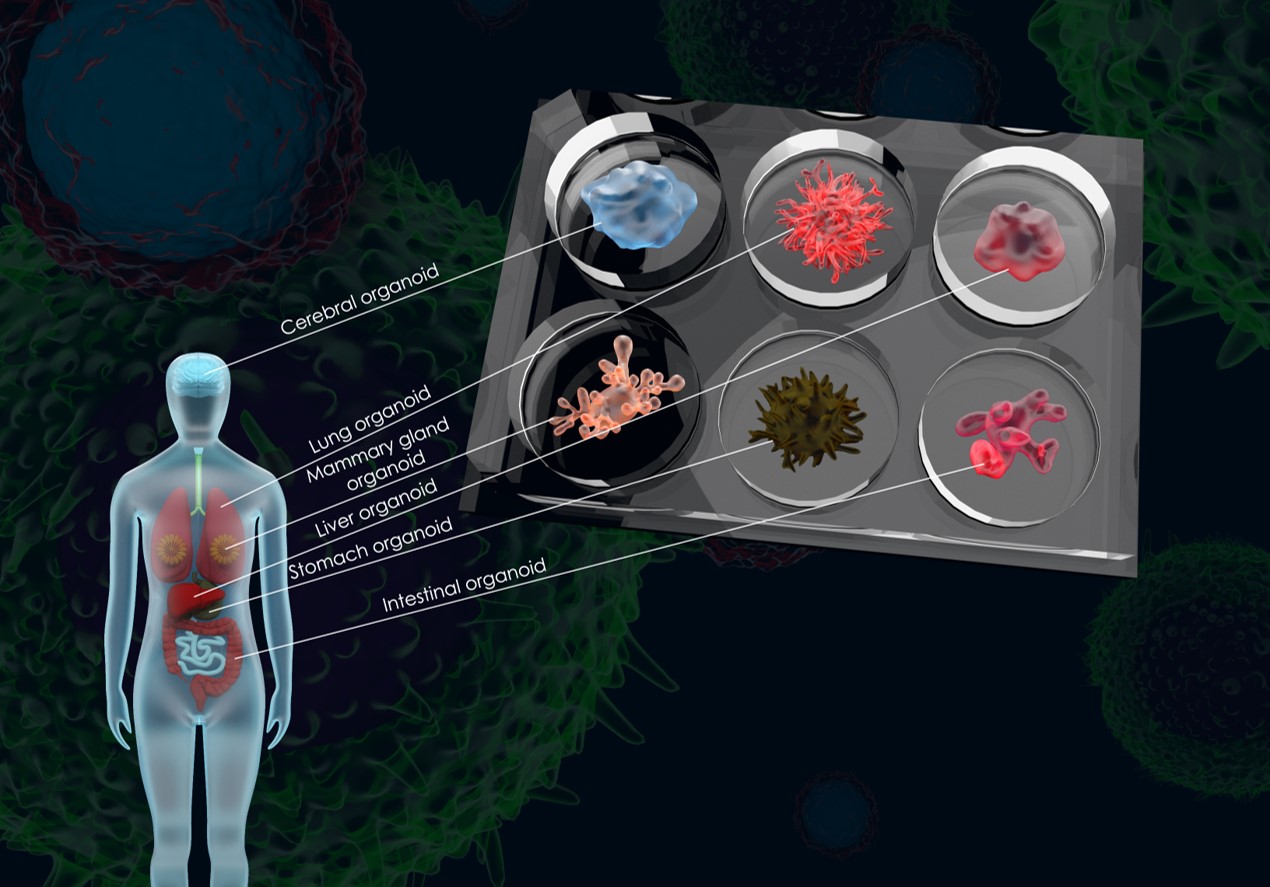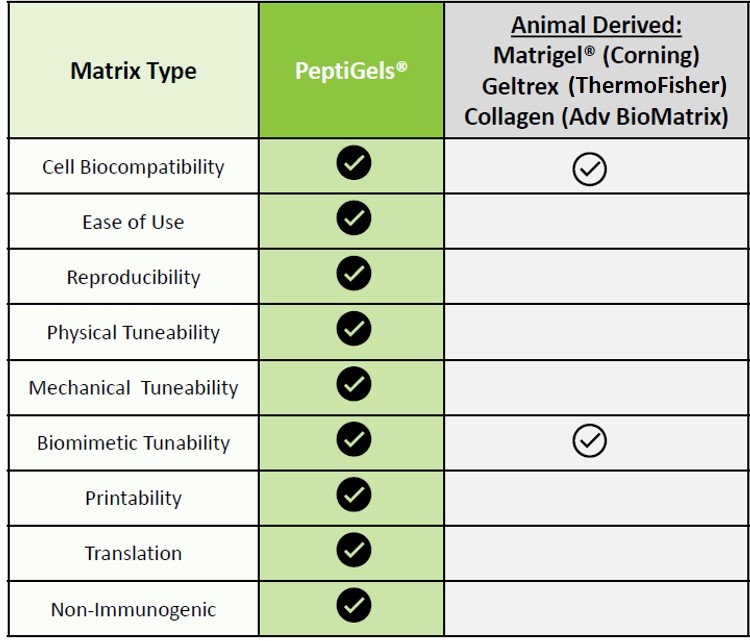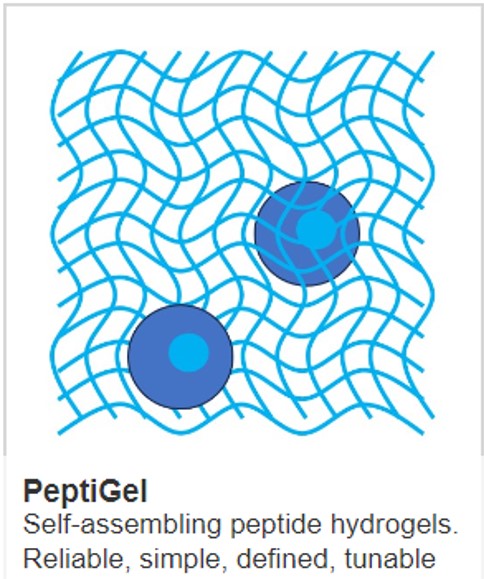Comparing BME vs PeptiGel hydrogels

When you think about 3D cell culture, you probably think about Matrigel™ – after all, it is the current market leader in 3D cell culture. Matrigel™ does have limitations, however, which is something that Cell Guidance Systems are tackling with a fully synthetic alternative.
This blog will discuss the differences between Matrigel™ and PeptiGels®, fully synthetic (and 100% animal-free) and the benefits you can expect from each.
Introduction to Matrigel™:
Matrigel™ is a basement-membrane matrix that is extracted from Engelberth-Holm-Swarm mouse sarcomas, and which has been used for more than 40 years in a wide range of cell culture applications.
Containing a mixture of major basement-membrane extracellular matrix (ECM) proteins and proteoglycan perlecan, it is packed with growth factors (although there is a reduce growth factor version available) and many enzymes – meaning it has long been considered an ideal biological and structural environment for culturing cells.
However, developments in cell technology over recent years have shown that the fact that Matrigel™ has a complex, ill-defined and variable composition means it is limited in its application to cellular biology, drug discovery and cell therapeutic development. It has also been shown there is variation in the biomechanical properties within a single batch and between batches of Matrigel™ – again leading to uncertainty about its use in cell culture experiments as well as doubts about its reproducibility.
Introduction to PeptiGels®:
PeptiGels® are Cell Guidance System’s fully synthetic alternative to the animal-derived Matrigel™. With PeptiGel we control the self-assembly of fully synthetic oligo-peptides into 3D fibrillar hydrogels that mimic the natural extracellular matrix (ECM).
As peptides are the building blocks of nature, this means that our ECM scaffolds not only provide a suitable environment for cells to survive and thrive but also means our peptide hydrogels are inherently biocompatible.
PeptiGels® were developed as a fully-defined alternative to achieve in vitro models that were more representative of the in vivo environment and that were:
- Reproducible – rigorous quality control ensures minimal variation in product quality, giving you confidence to achieve the same results every time
- Biocompatible – ensures they are non-immunogenic and have no toxicity effects, helping you translate your research to the clinic
- Ready-to-Use – supplied ready-made and room temperature stable with no preparation steps required
- Animal-free – a fully synthetic ECM alternative supporting the initiative to more ethical research
One of the most popular properties of PeptiGels® is that they can be tailored to specific requirements – meaning the mechanical stiffness can be altered to suit all cell types, as well as their functionality, so it’s possible to include relevant cell recognition sequences (such as fibronectin, collagen and laminin) that are present in the native ECM.
Property Comparison:

Matrigel™ and PeptiGels® both offer an environment for growing cells in cell culture, but PeptiGel® has the edge when it comes to control, translatability and methods to help support the generation of new platforms suitable to sustain 3D cell growth and tissue formation in vitro.
IMAGE: Organoids. Shutterstock



